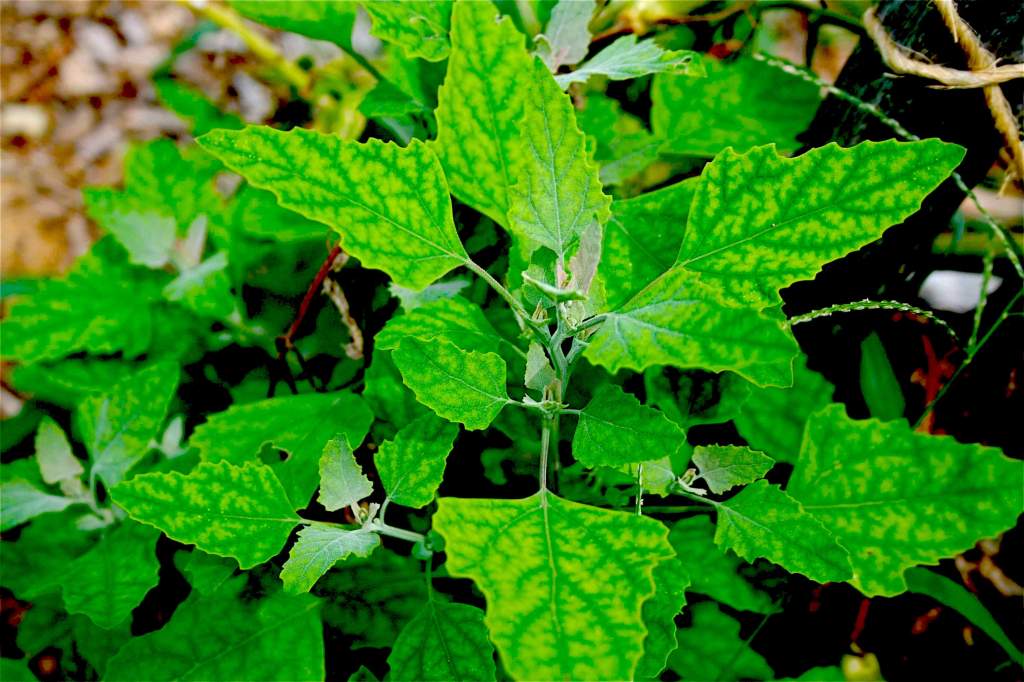Good Enough to Eat?
by Albert Brian Vick Lewis Ginter Botanical Garden, Community Kitchen Garden Coordinator
At the Lewis Ginter Community Kitchen Garden we’ve produced several stellar specimens of “weeds” so far this season. That’s one of the challenges to keep up with when you’re blessed with the good size of our garden.
For example, one of our tomato plots uses six-foot tall tomato cages, and some of the cages are placed a little too close together – almost touching. This makes it difficult to keep the paths between the rows clear. The result: At least one six-foot Lambsquarter specimen, impossible to yank from the ground by hand. A little online research indicates the maximum height for Lambsquarter is four feet. I guess we set a record.
The research also indicates the leaves and stems are edible, nutritious & delicious. (Do your own due diligence before ingesting any “weeds” as plants can often be confused with one another.) It leads me to wonder: Have you ever noticed that so many “weeds” are supposed to be edible & nutritious, and those same weeds absolutely thrive in poor conditions (poor soil quality, lack of water)? Maybe there’s a sustainable food market in the cultivation of “weeds”.
